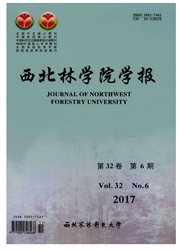

 中文摘要:
中文摘要:
有 NCEP 分析 II 的地区性的综合环境模型系统(RIEMS 2.0 ) 被利用在 2008 年 1 月在南部的中国上模仿严重结冰雨和雪暴风雪事件,它在这个区域引起了严重损坏。以西、低级的喷气,在结冰的雨过程和大规模发行量之间的关系浇蒸汽交通,和在北方的风区域 / 紧张索引,被分析理解结冰的雨出现的机制。结果显示下列:(1 ) RIEMS 2.0 在 2008 年 1 月复制了降水的模式很好,特别为在长江山谷和南部的中国上平均的每日的降水的时间的进化;(2 ) RIEMS 2.0 在 westerlies,西南的水流搬运了丰富的潮湿进南部的中国的南方布朗奇复制了坚持的马槽;(3 ) RIEMS 2.0 相当复制了轻、中等的雨的频率的模式,尽管它在南部的中国过高估计雨的频率。这研究证明 RIEMS 2.0 能 feasibly 被使用在东亚学习极端天气和气候事件。
 英文摘要:
英文摘要:
The Regional Integrated Environmental Model System (RIEMS 2.0) with NCEP Reanalysis II is utilized to simulate the severe freezing rain and snow storm event over southern China in January 2008, which caused severe damage in the region. The relationships between the freezing rain process and the large-scale cir- culation, in terms of the westerly and low-level jets, water vapor transportation, and northerly wind area/intensity indices, were analyzed to tmderstand the mechanisms of the freezing rain occurrence. The results indicate the fol- lowing: (1) RIEMS 2.0 reproduced the pattern of precipi- tation in January 2008 well, especially for the temporal evolution of daily precipitation averaged over the Yangtze River valley and southern China; (2) RIEMS 2.0 repro- duced the persistent trough in the South Branch of the westerlies, of which the southwesterly currents trans- ported abundant moisture into southern China; (3) RIEMS 2.0 reasonably reproduced the pattern of frequencies of light and moderate rain, although it overestimated the frequency of rain in southern China. This study shows that RIEMS 2.0 can be feasibly applied to study extreme weather and climate events in East Asia.
 同期刊论文项目
同期刊论文项目
 同项目期刊论文
同项目期刊论文
 Simulation of a Freezing Rain and Snow Storm Event over Southern China in January 2008 Using RIEMS 2
Simulation of a Freezing Rain and Snow Storm Event over Southern China in January 2008 Using RIEMS 2 期刊信息
期刊信息
